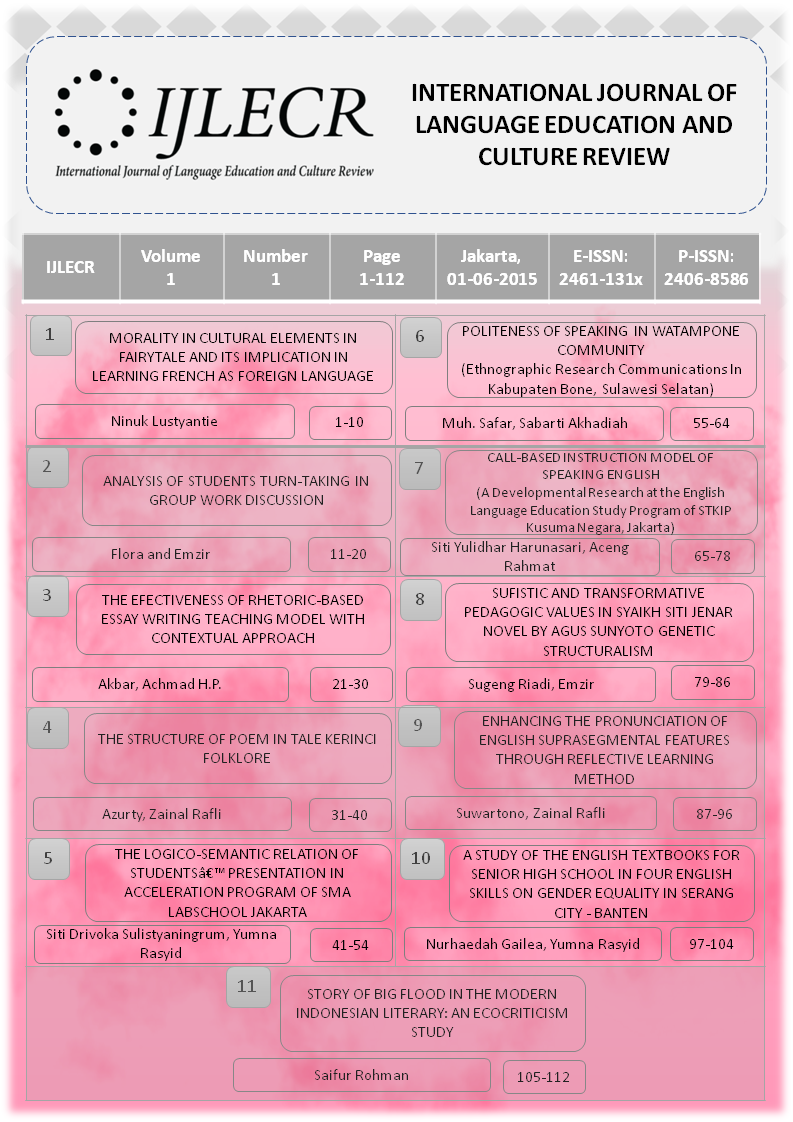MORALITY IN CULTURAL ELEMENTS IN FAIRYTALE AND ITS IMPLICATION IN LEARNING FRENCH AS FOREIGN LANGUAGE
DOI:
https://doi.org/10.21009/IJLECR.011.01Abstract
The culture of a society is closely related to the language used by the speakers. Moreover, there are opinions saying that in a language there will be patterns of behavior, materials, ideas (beliefs and knowledge), and sentiments (attitudes and norms) of a society that are formed and exposed. This fact is in accordance with the opinion that a language is more than just a communion; it is the relation between individual and sociocultural values. Among all characteristics of culture, language is the most prominent distinguishing feature, since each social group feel themselves as a different entity from other groups. For certain social groups, language is used as the social identity/symbol. Close relation between language and culture is reflected in words used by the society. A concept or way of life in a society can be supported by words and language. Someone’s language behavior generally follows the culture of a society where he/she lives, including how the cultural elements appear in the equipment of human life, livelihood, social system, language (and literature) system either written or oral, various of arts, knowledge system, and religious system. Sapir-Whorf Hypothesis states that there is a close relation between the language used by people and how they understand the world and behave in it. Based on 17th Century French fairytales, this article will review the moral values contained in the cultural elements and the implications in learning French as a foreign language.








